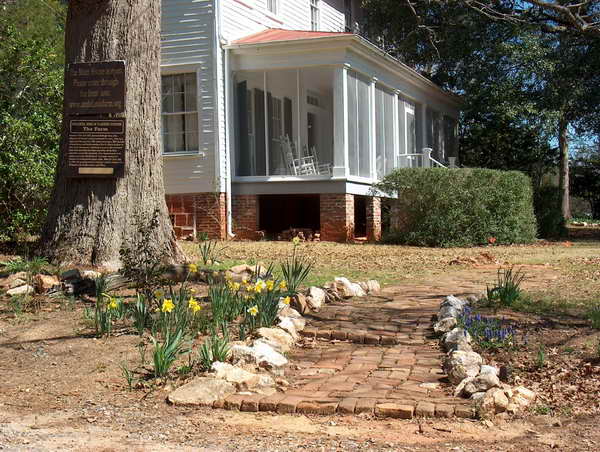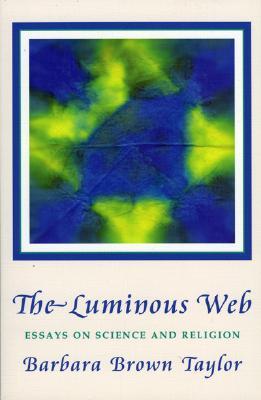During the thirteen years that I served as the director of Andalusia, the home of Flannery O’Connor in Milledgeville, Georgia, I had the privilege of meeting thousands of fans of this gifted writer. They came from every state in the country and from almost every continent around the globe. O’Connor is one of those rare authors whose work attracts an amazingly diverse audience. On any given day at Andalusia farm, we might have welcomed a busload of World War II generation grandparents in the morning followed in the afternoon by college students dressed all in black with spiked hair, black fingernail polish and lipstick, tattoos on all visible surfaces, and metal piercings decorating their faces who would walk in the door and say, “Flannery O’Connor is so kick-ass!” Her fan base covers almost every segment of society: straight, LGBTQ, Catholic, Protestant, Muslim, Hindu, Buddhist, agnostic, atheist (one of our largest donors was an atheist biology professor), Democrat, Republican, alt left and right, blue and white collar, and readers representing all income levels. Her books have been translated into at least twenty different foreign languages, indicating the cultural diversity of her following too.
What draws readers to O’Connor’s work, and why do they travel great distances to visit Andalusia, the place where she finished all of her published books? From my standpoint, there are only a few definitive answers but plenty of speculation. When we welcomed visitors to the farm, the first question we asked them was, “How did you find out about Andalusia?” Their answer would usually give us some clues of how to structure their tour to give them the best experience possible. If their response was, “We just saw the sign on the road and wondered what was back here,” then we would give them plenty of biographical information to introduce them to O’Connor’s life and the significance of her contributions to American literature. If on the other hand they told us that they had been teaching O’Connor’s work for 25 years and had always wanted to see the place that inspired her fiction, we would go in a different direction, encouraging them to ask questions that would satisfy their curiosity about O’Connor’s environs.

Anyone who has read O’Connor’s fiction even once immediately recognizes that her characters are particularly odd and not altogether admirable, which is probably the most polarizing point for her readers. Consequently, there are few lukewarm reactions to O’Connor’s stories; people either hate them or absolutely adore them. The haters walk away puzzled at why the lovers become nearly obsessed. Many of the die-hard fans who visited Andalusia had a mission to locate every place on the property that supposedly appears in the stories: the hayloft where Hulga lost her wooden leg; the milking parlor where Asbury drank the unpasteurized milk; the equipment shed with its tractor that ran over Mr. Guizac; and the white water tower in “A Circle in the Fire.” Other admirers weren’t as fascinated with such direct physical connections but were nevertheless impressed with how the farm clearly served as an inspiration for the fiction. O’Connor is revered by so many writers, some of whom made the pilgrimage to Andalusia while I was there: Allan Gurganus, Padgett Powell, and Salman Rushdie were among them.
Who else visited Andalusia and why? Here is where the story becomes more intriguing and just a tad O’Connoresque. A few examples may shed some light on how wide the spectrum was and render a snapshot of the author’s devotees. The true pilgrims were the visitors who regarded O’Connor and her home with a certain sense of reverence, like the woman who stepped up to the front porch and asked me if she should remove her shoes before entering the house, as if she were about to tread on holy ground. I assured her that I always kept my shoes on in and outside the house. Those who were specifically drawn to O’Connor’s use of grace bestowed, if not slammed, on her characters truly considered Andalusia to be a place of religious significance. This was especially the perspective of practicing Catholics and most notably clergy, like the two priests who requested to hold a prayer vigil in the guest bedroom on the second floor where they would be less likely disturbed by, or be disturbing to, other visitors. They were up there for an hour. I was impressed with their stamina — the room was hotter than three hells in the summer, which was the time they elected to visit, in full black vestments.
A common observation shared by so many Andalusia visitors was a sense of the author’s spirit being present in the main house and on the property. For some this was merely a recognition that the authenticity of the place — buildings, furniture, and furnishings original to O’Connor’s time at the farm — helped them somehow feel closer to its famous occupant. Of course, we also had our fair share of ghost hunters and paranormal investigators who, for reasons that defy understanding, believe that the departed with celebrity status are more easily detected than your run-of-the-mill homeowner. I have never understood why ghost hunters don’t spend more time at hospitals, the very place where so many people pass on to the “next plane of existence.” I could usually tell if a visitor had high hopes for a Poltergeist encounter by the familiar question, “So, did she die in the house?” She did not. She died in the hospital.
Some of our guests went the extra mile to make their visit to Andalusia a truly memorable experience. A couple of folk singers recorded an original song on the front porch. Artists painted landscapes and farm buildings. Writers drafted stories while sitting in the iris gardens. Photographers snapped shots everywhere their eyes pulled them. One young woman was so taken by the beauty of the place while she was attending the college in town, O’Connor’s undergraduate alma mater, that she decided to have her wedding on the front lawn under the enormous oak trees, complete with peacock feathers in her hair. (O’Connor raised many different breeds of domestic birds, but peacocks are the species so identified with her life at Andalusia.)
O’Connor fans have found inventive ways to demonstrate their devotion to the author, from naming their daughters “Flannery” to having elaborate tattoos of peacock feathers permanently decorating their bodies. It was a pleasure to meet them all and to hear them share their admiration for this comic genius. Some made great sacrifices to pay homage to O’Connor at Andalusia, like the four scholars from Japan who spent most of a Saturday at the farm. When I asked what brought them to the states, the only one who could speak any English at all looked at me with a surprised expression and then smiled warmly and said, “Flannery O’Connor. This place.” I was moved.

The impact that O’Connor’s work had on some visitors’ lives was immediately apparent when they walked in the front door of the main house. Their countenance, their excitement, and their strong emotions spoke volumes. Several claimed that O’Connor had drawn them to the Catholic Church. Others credited O’Connor for launching their vocations as writers, artists, teachers, or ministers. It is rather ironic that a writer who has brought great joy to so many readers also endured great suffering for the last third of her 39 years as lupus slowly took away her life. This is an inescapable part of her story that no sensitive visitor to Andalusia would ever miss. I watched big, burly men apologize to me as they wept standing at the doorway of O’Connor’s first-floor bedroom where she slept and worked. No need to be sorry — I cried too, more than once.










